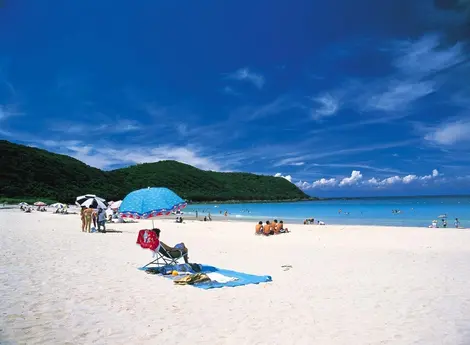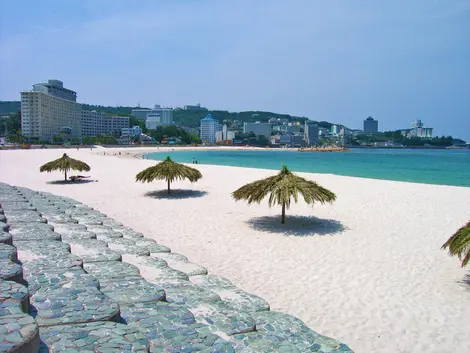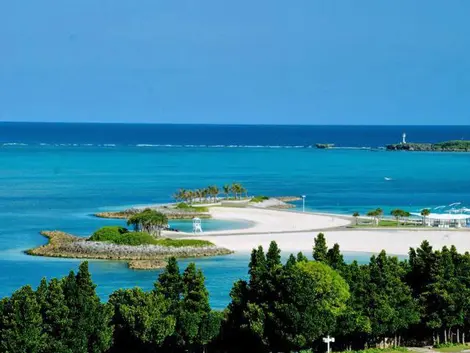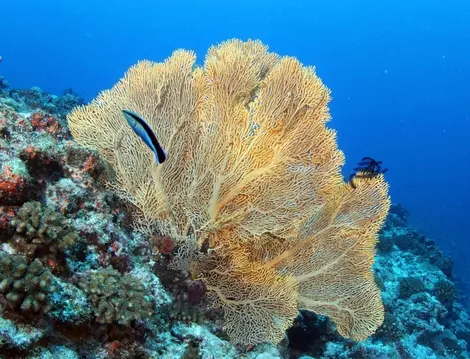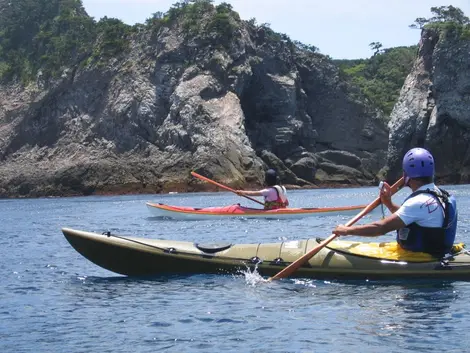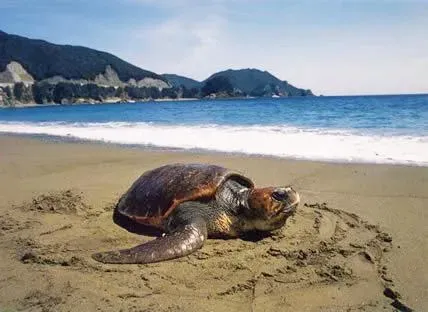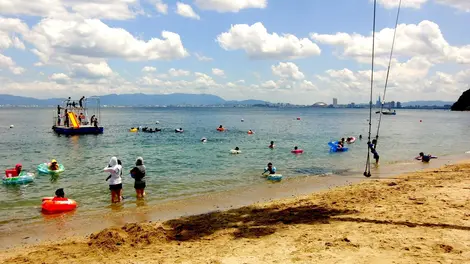Beaches in Japan
- Published on : 16/10/2014
- by : C.W.
- Youtube
Tan in the Rising Sun
Despite more than 30,000 kilometers of coastline, beautiful beaches in Japan are rare, and the Japanese don't have a culture of sunbathing. But if you look closely, you can still find that magical combination of white sand, blue sky and turquoise water.
Shirahama, the most sacred
Between the holy mountain of Koya and the Kumano Pilgrimage trails, we often forget the beautiful beaches of the Kii Peninsula (which extends between south Osaka and Ise Shrine), and the most famous beach on its west coast: Shirahama. This beautiful arc of "shira-hama" (meaning "white sand") is a famous resort for summer fun, lined with hotels and a pleasant promenade for nice evening strolls. One attraction of Shirahama is obviously the beach, but there is another: a discreet rocky headland to the left of the beach, home to Saki no Yu onsen, one of the oldest and most revered of Japan's hot springs. Recommended for contemplating the ocean in a outdoor bath, immersed in relaxing hot water.
Warning: Shirahama is stormy in the summer. Instead choose to go in May, June or September, or head a little further south towards Kushimoto. The Kii Peninsula is full of other less well-known and also less populated beaches.
Emerald Beach, the most tropical
When we talk about "Japanese beaches" we inevitably have to mention Okinawa, the sub-tropical island group with palm trees and coral reefs, which is a bit of a Riviera for Japanese people on holiday. Don't expect to find deserted or undiscovered nature in this mecca of mass tourism, but rather postcard-perfect beaches with turquoise waters and pristine sand. This especially is the case for Emerald Beach on the north coast of the main Okinawa (Honto) island. It is also one of the free beaches in the area (many are accessible for a 500-1000 yen fee). Over 500m long and located within the Ocean Expo Park (a park which also offers a free aquarium and museum), the Emerald Beach is closed off by a massive reef, making it the only beach-lagoon in Japan.
Yumigahama, the most Tokyo-style
A bit of a posh Tokyo beach, Yumigahama is located on the Izu volcanic peninsula formed in part by the eruptions of Mount Fuji. It's a popular resort for its beaches and small harbors. At its southern end, near Shimoda (one of Izu's two major resorts, with Atami in the north), a long beach lined with pine trees extends over 1 km. Yumigahama is an ideal destination for summer picnics and fireworks at the beach (the crowd is younger than that of neighboring Shirahama, which welcomes many families). And a few miles north, Shimokamo is one of the famous onsen in the area, and has a hot spring that supplies an interesting tropical garden.
Asakawa Ozuna, the quietest
To avoid the crowds, the island of Shikoku is generally a good destination. The southern coast is especially quiet and deserted in comparison with the big northern cities such as Takamatsu and Matsuyama. It's here, in this quietly charming area, that the pretty Asakawa Ozuna beach faces the Pacific Ocean. Even in the middle of August, there is tranquility guaranteed for beach goers, and facilities are numerous despite the low number of visitors (parking, showers, toilets, lockers). Surfers can look for waves a little further south near Kaifu (a mecca for Japanese surfers, at the mouth of the river with the same name), or to the north towards Tainohama.
Nokonoshima, the most urban
Lying on the sand, feet in the water, one can contemplate the distant skyscrapers of the city of Fukuoka, including Fukuoka Tower. The beaches of the small island of Nokonoshima (in the middle of Hakata Bay) are perhaps not the wildest and most secret in the country, but they are easily accessible (a 10 minute ferry ride from Meinohama Pier) and are an opportunity to get away from the industrious and noisy atmosphere of Fukuoka city. Fabulous flowerbeds (daffodils, cosmos and more) that make the reputation of Nokonoshima Gardens, can be seen throughout the year.







